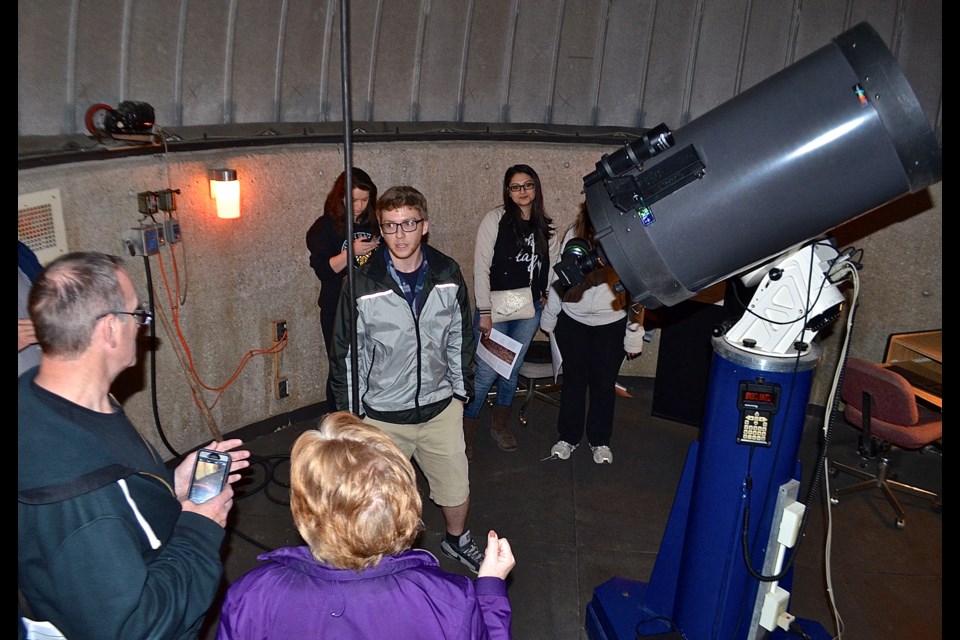Mars is coming into opposition, the closest it will be to Earth for another two years.
That seemed an ideal opportunity for students from the physics department at the University of Guelph to talk about their research and in particular the contribution they are making to the Mars Rover Program.
“It is a small department with only 13 faculty right now but we are certainly influential,” said U of G physics student John Malcolm. “We are really heavily focused on education of physics for our physics students and students outside the department. Of all the universities across Canada the University of Guelph has the largest number of physicists in our undergrad per capita.”
The research done by U of G physicists and the role they are playing with the mission of NASA’s rover Curiosity was highlighted during a recent presentation at War Memorial Hall.
“Hopefully, people will leave with an understanding of what Curiosity is, why it is on the surface of Mars, what it is doing and what is Guelph’s involvement,” said PhD student Scott Van Bommel.
For the last four years Curiosity has been exploring a giant crater on the Martian surface and performing experiments to determine if conditions on Mars were ever capable of supporting life.
“My supervisor, Dr. Ralph Gellert, is the principal investigator of one of the instruments funded by the Canadian Space Agency,” said Van Bommel. “It was built in Brampton. It was designed here in Guelph and operations headquarters are here in Guelph.”
The Alpha Particle X-Ray Spectrometer or APXS is an instrument about the size of a pop can that is attached to Curiosity’s robotic arm. It analyzes soil and surface material collected by other components on the arm.
“On any given day here in the physics building there will be people participating in the tactical operations and planning of what is going on with the rover Curiosity,” said Van Bommel. “We also have affiliates all over the world including the University of New Brunswick and the Jet Propulsion Lab in Pasadena.”
Last week's event was designed for children but they were outnumbered by wide-eyed adult space geeks.
“I came here to learn,” said eight-year-old Aidan Dalipe, who was accompanied by his grandfather Chris Chovez.
The presentation followed the Curiosity mission from its launch from Cape Canaveral on November 26, 2011 to the historic landing on Mars August 6, 2012.
Scientists had only one chance to land the $2.5 billion, 900-kilogram piece of machinery successfully.
The landing took a total of seven minutes from the moment Curiosity entered Mars’ atmosphere until it touched down. Because it took 14 minutes for a signal from Mars to reach Earth 570 million km away, the mission crew spent seven agonizing minutes wondering if Curiosity crashed or landed safely.
Everything went as planned and Curiosity has performed far beyond anyone’s expectations.
At the end of the presentation they showed two powerful images captured by the cameras on Curiosity. One was of a blue sunset on Mars and the other was a photograph of Earth from Mars – a tiny speck in the expansive Martian sky indistinguishable to the untrained eye from the billions of stars in the visible universe.
Van Bommel said people are often surprised to hear how much the U of G contributes to space research and particularly the Mars Rover program.
“There are a lot of people in the community that aren’t aware of it and that’s part of the reason we are doing this,” he said. “The rover is just one of a long list of little known but really exciting, cutting edge aspects of our research.”
